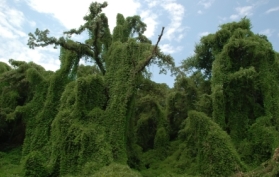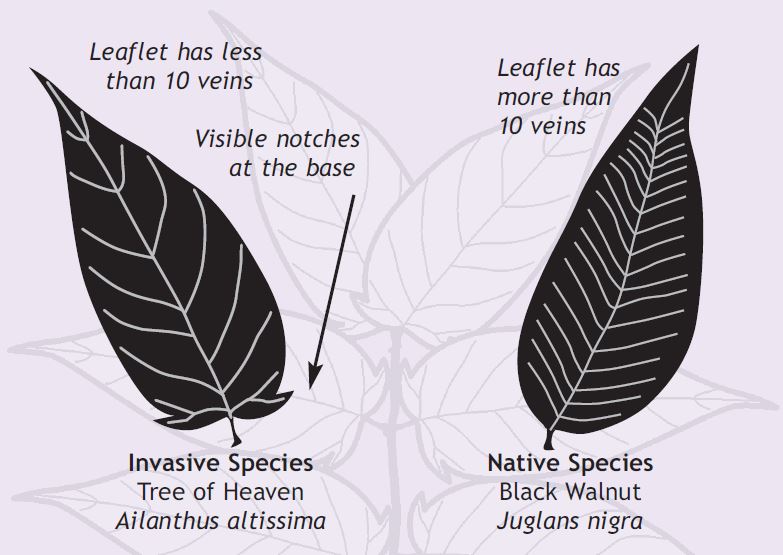 Moving plant and animal species to new environments can be beneficial, but can often cause environmental and economic harm.
Moving plant and animal species to new environments can be beneficial, but can often cause environmental and economic harm.
Doing the Activity
The next time you are in the forest or other outdoor space, introduce the term “invasive species” to children and discuss its meaning by asking:
- How would this area look different if a family of elephants lived here?
- What impact would the elephants have on the plants and animals nearby?
- Where do elephants live in the wild?
- Why don’t elephants live here?
Of course, elephants have not invaded woodlands of the United States, but invasive species are impacting local forest ecosystems.
For example, Tree of Heaven (or Ailanthus) is an invasive plant originally from central China, now found in 30 U.S. states. It is often mistaken for the native Black Walnut and left to grow and reproduce.
Tree of Heaven grows rapidly, is difficult to remove, and displaces native plants.

Both species have compound leaves, but can you identify the differences between the leaflets?
Fill in the vowels to identify common characteristics of invasive species.
- Have a short l__f__cycl__ and produce many __ffspr__ng
- Gr__w very quickly
- Are not affected by natural pr__d__t__rs in their new h__b__t__ts
- Spr__ __d quickly and easily to new __c__syst__ms
- Often t__l__r__t__ a wide range of different __nv__r__nm__nts
Download the Activity
Descarga la actividad en español: Especies invasoras
Get the Full Activity
This family activity is adapted from Project Learning Tree’s PreK-8 Environmental Education Activity Guide which can be obtained through an in-person professional development workshop or online course.
All PLT activities are copyright protected. Please remember to reproduce responsibly.
Click here for our Content Reprint and Adaptation Policy.


